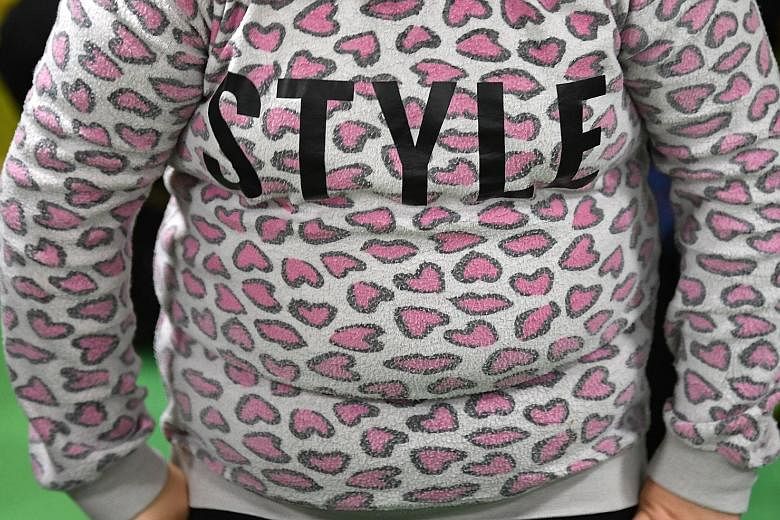GENEVA • The number of obese children and adolescents worldwide has jumped tenfold in the past 40 years and the rise is accelerating in low-and middle-income countries, especially in Asia, a major study said yesterday.
Childhood and teen obesity rates have levelled off in the United States, north-western Europe and other rich countries, but still remain "unacceptably high" there, researchers at Imperial College London and the World Health Organisation (WHO) said.
"Over 40 years we have gone from about 11 million to a more than tenfold increase to over 120 million obese children and adolescents throughout the world," the study's lead author, Professor Majid Ezzati of Imperial's School of Public Health, told a news conference.
This means that nearly 8 per cent of boys and nearly 6 per cent of girls worldwide were obese last year, against less than 1 per cent for both sexes in 1975.
An additional 213 million children aged five to 19 were overweight last year, but fell below the threshold for obesity, according to the largest-ever study, based on height and weight measurements of 129 million people.
The researchers called for better nutrition at home and at school, and more physical exercise to prevent a generation from becoming adults at greater risk of diabetes, heart disease and cancers due to excessive weight.
Clear food labels on salt, sugar and fat content are needed to help consumers make "healthy choices", the study said. Taxation and tough restrictions on marketing of junk food should be considered, it said. The WHO has already recommended a 20 per cent tax on sugary drinks to reduce consumption.
South Africa, Egypt and Mexico, which had "very low levels of obesity four decades ago", now have among the high rates of obesity in girls, between 20 per cent and 25 per cent, Prof Ezzati said.
"The experiences of East Asia and Latin America and the Caribbean show that the transition from underweight to overweight and obesity can be rapid," the study said. And if current trends continue, in 2022, there will be more obese children and teenagers worldwide than underweight ones, who now number 192 million, half of them in India, it added.
Polynesia and Micronesia had the highest rates of child obesity last year, 25.4 per cent in girls and 22.4 per cent in boys, followed by "the high-income English-speaking region" that includes the US, Canada, Australia, New Zealand, Ireland and Britain.
Among high-income countries, the US had "the highest obesity rates for girls and boys", 19.5 per cent and 23.3 per cent, respectively.
"Children are not getting physical activity in the school days, there are poor food opportunities in many schools, walking and cycling to school are going down in many countries, unsafe in many other countries, and parents are not being given the right, sufficient advice on nutrition," said Ms Fiona Bull of the WHO's department of non-communicable diseases.
"It's the changing environments - food, behaviours, portions, consumption patterns have completely changed over the last 40 years. Highly processed food is more available, more marketed and it's cheaper," she added.
Meanwhile, Ireland is set to introduce a new sugar tax for soft drinks from next April, according to Finance Minister Paschal Donohoe.
In a budget speech to Parliament on Tuesday, Mr Donohoe said a tax of 30 euro cents per litre (50 Singapore cents) on drinks with over 8g of sugar per 100ml will be introduced, along with a reduced rate of 20 euro cents per litre on drinks with between 5g and 8g of sugar per 100 ml.
Mr Donohoe said these tax rates are consistent with those being introduced in Britain next April, and "our sugar tax will commence at the same time subject to state approval".
In a statement, the Irish Heart Foundation hailed the move: "The introduction of a sugar sweetened drinks levy is probably the single most important action the government can take to tackle Ireland's obesity crisis. As a result, this is a landmark day in the fight against what is now recognised as perhaps the biggest threat to the health of the nation."
REUTERS, XINHUA

